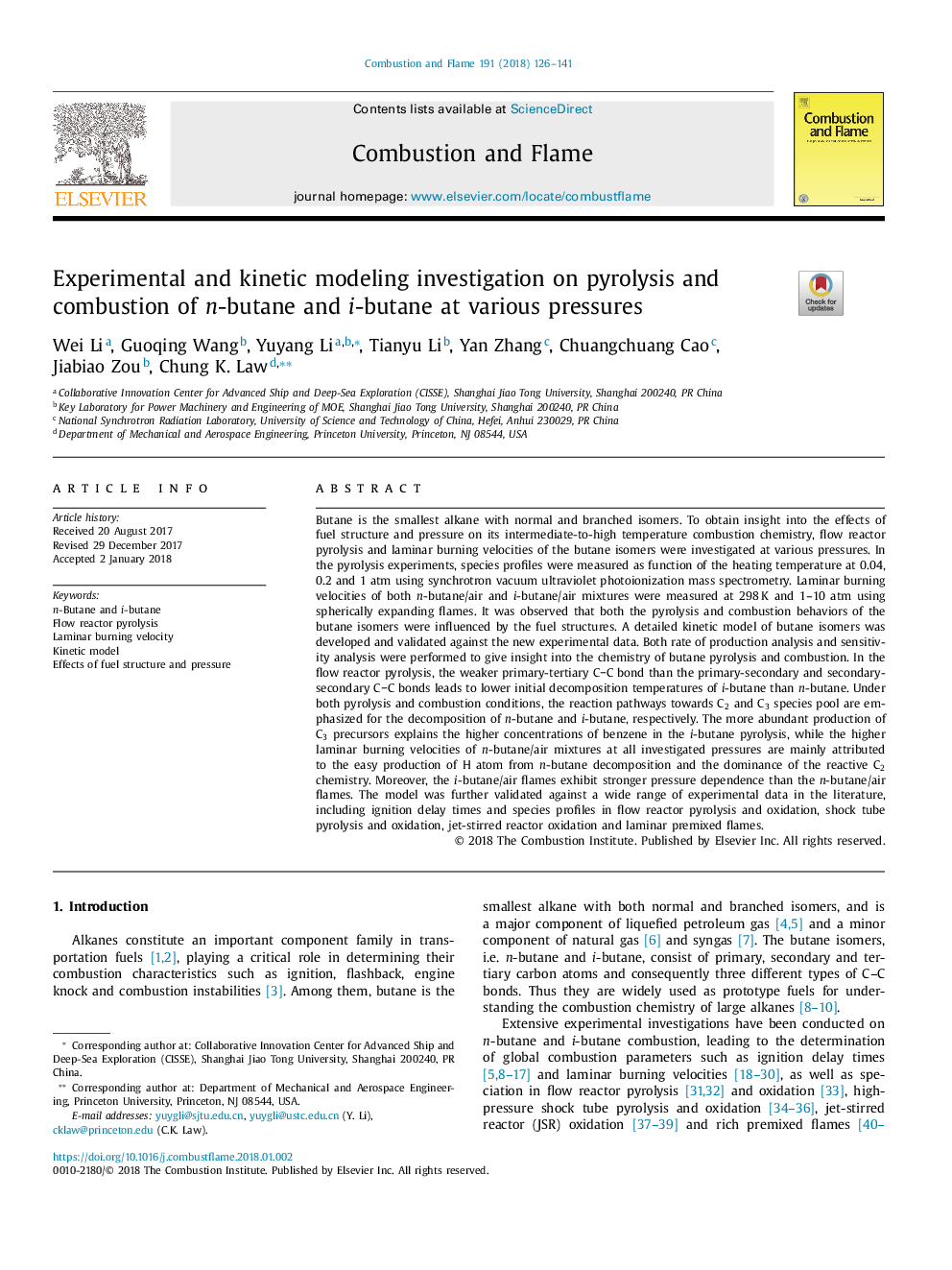| کد مقاله | کد نشریه | سال انتشار | مقاله انگلیسی | نسخه تمام متن |
|---|---|---|---|---|
| 6593740 | 1423546 | 2018 | 16 صفحه PDF | دانلود رایگان |
عنوان انگلیسی مقاله ISI
Experimental and kinetic modeling investigation on pyrolysis and combustion of n-butane and i-butane at various pressures
ترجمه فارسی عنوان
تحقیق مدل سازی تجربی و جنبشی در مورد پیلوریزاسیون و احتراق نان بوتان و بوتان در فشارهای مختلف
دانلود مقاله + سفارش ترجمه
دانلود مقاله ISI انگلیسی
رایگان برای ایرانیان
کلمات کلیدی
موضوعات مرتبط
مهندسی و علوم پایه
مهندسی شیمی
مهندسی شیمی (عمومی)
چکیده انگلیسی
Butane is the smallest alkane with normal and branched isomers. To obtain insight into the effects of fuel structure and pressure on its intermediate-to-high temperature combustion chemistry, flow reactor pyrolysis and laminar burning velocities of the butane isomers were investigated at various pressures. In the pyrolysis experiments, species profiles were measured as function of the heating temperature at 0.04, 0.2 and 1 atm using synchrotron vacuum ultraviolet photoionization mass spectrometry. Laminar burning velocities of both n-butane/air and i-butane/air mixtures were measured at 298â¯K and 1-10 atm using spherically expanding flames. It was observed that both the pyrolysis and combustion behaviors of the butane isomers were influenced by the fuel structures. A detailed kinetic model of butane isomers was developed and validated against the new experimental data. Both rate of production analysis and sensitivity analysis were performed to give insight into the chemistry of butane pyrolysis and combustion. In the flow reactor pyrolysis, the weaker primary-tertiary CC bond than the primary-secondary and secondary-secondary CC bonds leads to lower initial decomposition temperatures of i-butane than n-butane. Under both pyrolysis and combustion conditions, the reaction pathways towards C2 and C3 species pool are emphasized for the decomposition of n-butane and i-butane, respectively. The more abundant production of C3 precursors explains the higher concentrations of benzene in the i-butane pyrolysis, while the higher laminar burning velocities of n-butane/air mixtures at all investigated pressures are mainly attributed to the easy production of H atom from n-butane decomposition and the dominance of the reactive C2 chemistry. Moreover, the i-butane/air flames exhibit stronger pressure dependence than the n-butane/air flames. The model was further validated against a wide range of experimental data in the literature, including ignition delay times and species profiles in flow reactor pyrolysis and oxidation, shock tube pyrolysis and oxidation, jet-stirred reactor oxidation and laminar premixed flames.
ناشر
Database: Elsevier - ScienceDirect (ساینس دایرکت)
Journal: Combustion and Flame - Volume 191, May 2018, Pages 126-141
Journal: Combustion and Flame - Volume 191, May 2018, Pages 126-141
نویسندگان
Li Wei, Wang Guoqing, Li Yuyang, Li Tianyu, Zhang Yan, Cao Chuangchuang, Zou Jiabiao, Law Chung K.,
